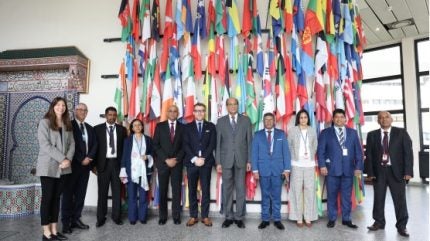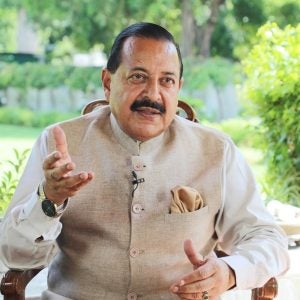
Sri Lanka’s government is drafting legislation to regulate nuclear power generation while the Sri Lanka Atomic Energy Board (SLAEB) is preparing to request an expression of interest from potential investors.
A team of experts from the International Atomic Energy Agency (IAEA) recently carried out a Site and External Events Design Review Service (SEED) mission to verify the safety of the selection process to identify potential sites for the construction of Sri Lanka’s first nuclear power plant.
This was followed by a visit to the IAEA headquarters in Vienna by a team of Sri Lankan legal experts to discuss a draft amended nuclear law. The main objective of the visit was to continue efforts to strengthen the country’s nuclear legal framework, in particular the Atomic Energy Act of Sri Lanka of 2014 and to further support consideration of adherence to the relevant international legal instruments.
Honorary Justice Shobitha Rajakaruna, President of the Court of Appeal, who was part of the delegation, said: “We thank the IAEA for its continued support to and cooperation with Sri Lanka aimed at ensuring the country’s nuclear legal framework aligns with the relevant international legal instruments which we are already a party to and intend to join to support the safe, secure and peaceful development of the nuclear power.”
During the visit, IAEA staff and experts provided comments on the updated draft Amendment of the Atomic Energy Act covering the four areas of nuclear law – nuclear safety, security, safeguards and civil liability for nuclear damage. This collaborative effort was aimed at ensuring that the draft Amendment is consistent with relevant instruments, safety standards, and nuclear security guidance, and supports the establishment of a comprehensive national nuclear legal framework.
The visit was carried out within the framework of the IAEA Legislative Assistance Programme under the Interregional Technical Cooperation project for legislative assistance. It was conducted with the financial support of the extrabudgetary funds provided by the USA and with financial support provided through the Nuclear Infrastructure Development Section of the IAEA Department of Nuclear Energy.
Meanwhile, a delegation from the China National Nuclear Corporation (CNNC) is expected to visit Sri Lanka shortly to evaluate the possibility of investing in NPP. Russia’s Rosatom, France’s Électricité de France (EDF) and Denmark’s Seaborg have also submitted proposals for nuclear power generation while US-based Ultra Safe Nuclear Corporation (USNC) and Atomic Energy of Canada Ltd (AECL) have expressed interest in investing in Sri Lanka.
A Rosatom delegation has already held talks in Sri Lanka. Nilanthi Kolonne and Shirantha Jayasekera, university professors of engineering, told AsiaNews that Russia had offered assistance in terms of capacity building and training of Sri Lankan personnel in the nuclear sector.
The proposal includes the installation of new design small modular reactors (SMRs) with a capacity to produce up to 300 MW of electricity per unit. However, discussions on the financing model for the project have not yet taken place.
SLAEB President Professor SRD Rosa briefed the Russian delegation on the current status of the proposal for an offshore or onshore NPP in Sri Lanka, which is still awaiting final approval from the Foreign Ministry. “Implementation depends on the signing of an intergovernmental agreement between Sri Lanka and Russia, which is currently pending and involves a change in current legislation,” he said. “We cannot expect the cost of nuclear power to be lower than that of hydropower – it will be somewhere between the costs of thermal and hydropower.”
SLAEB has inspected the NPP Russia is building in Bangladesh, and the unit price for power generation is about 27-30 Sri Lankan rupees, a cheaper option than current sources. However, the problem is lack of funds. The government is therefore looking for investors to carry out the project.






